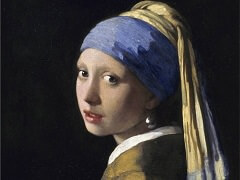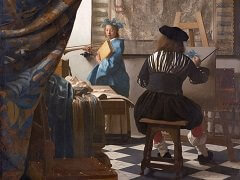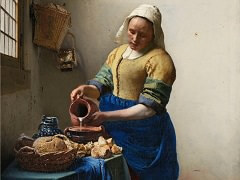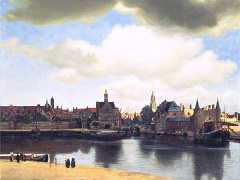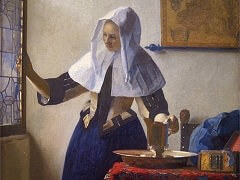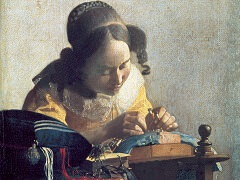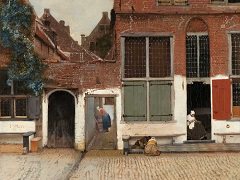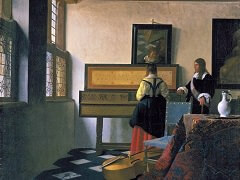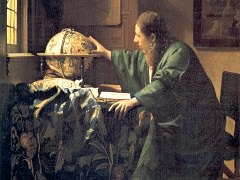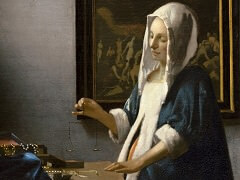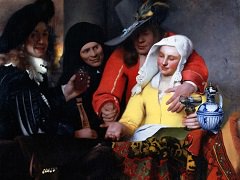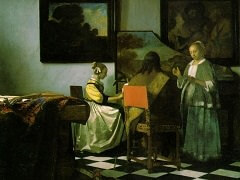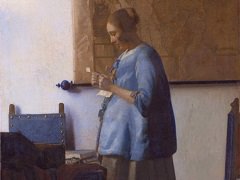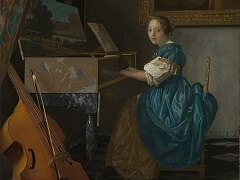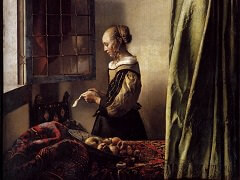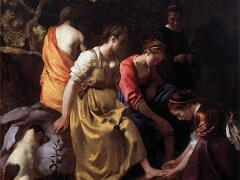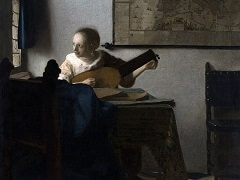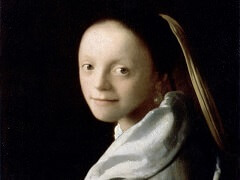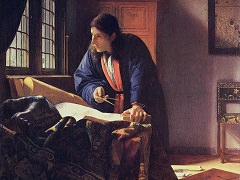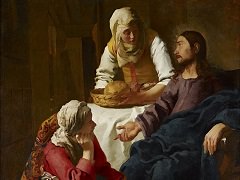Girl with a Red Hat, 1665 by Johannes Vermeer
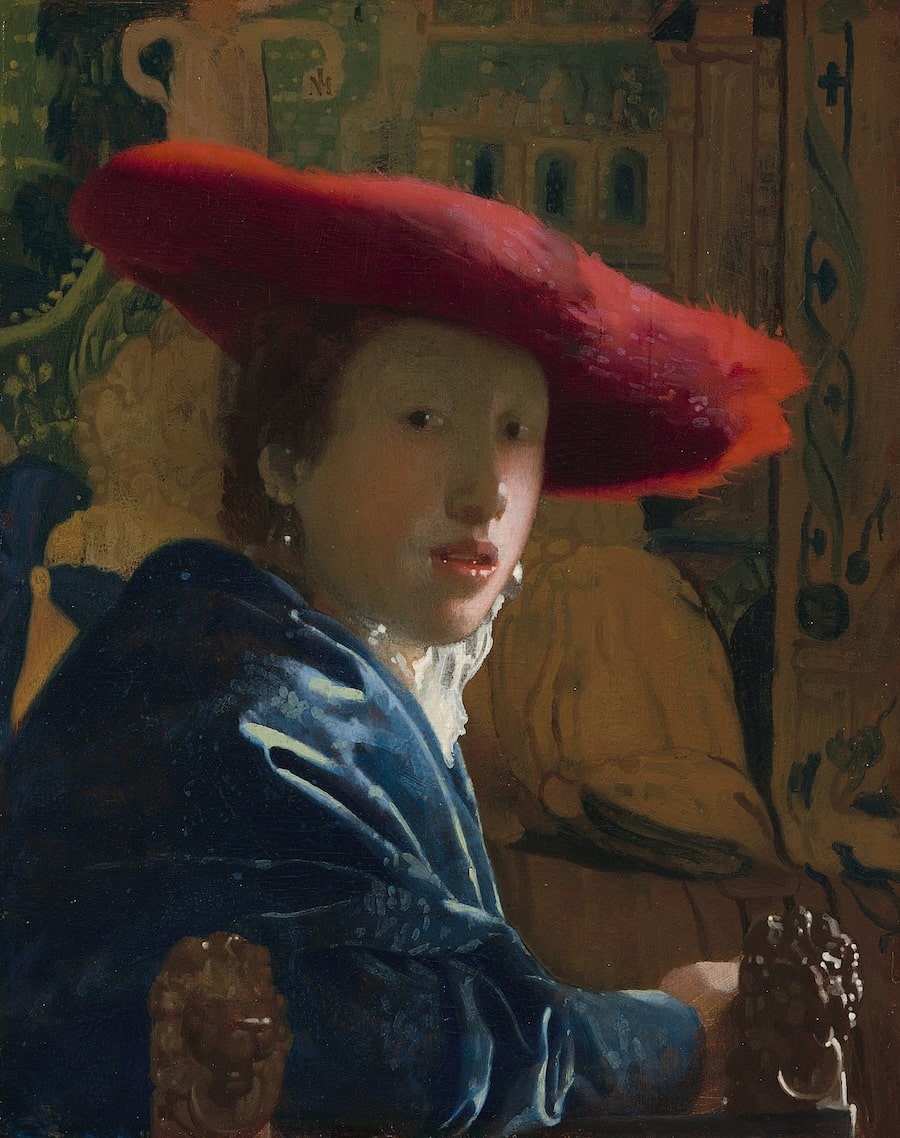
Aside from the expectant expression on the young woman's face, much of the vivacity of this extraordinary painting stems from the manner which it is painted. The reflections of light take shape as pale, densely applied brushstrokes
of white and yellow paint which animate the surfaces of the different objects and materials and bring them close to the picture surface, reminding us that we in looking at a painted object in contrast to these strongly lit areas,
the red hat and blue garment are painted over darker under layers, which give the colors warmth. The sumptuousness of the materials and the depth and intensity of the color range used by Vermeer contributed to the sense of warmth
which is a key element in this work's aesthetic.
To understand the subject of this painting we need to set it in the context of the tronien, a Dutch term which refers to paintings of busts or heads, generally wearing hats or exotic clothes and depicting anonymous or fictive
characters. This type of work was to some extent experimental, and allowed artists to investigate the expression and clothing of the figures rather than focus on a faithful reproduction of their features. The exotic dress of the
girl in the present painting and her expectant expression with its half-open mouth, intense gaze and impression of having just turned her head to look at us, indicate that this work is a tronie.
The small size of the painting and the fact that it is painted on panel make it unusual within Vermeer's oeuvre and have led some authors to doubt its attribution. However, the technical devices evident in the work, such as the
colors of the underlayers and the way of applying lights and color, as well as the impression of immediacy and control which the girl's pose conveys, all point to Vermeer. Some of the specialists who have doubted Vermeer's
authorship have pointed to the incorrect alignment of the two lions' heads on the chair on which the girl leans her right arm. However, it is characteristic of Vermeer to modify his scenes with the aim of creating the spatial and
formal relationships which constitute his pictorial language. In other words, his paintings respond to a logic which is more visual than geometric.
Among all of Vermeer's paintings, Girl with a Red Hat is perhaps the one which comes closest to the type of image produced by an instrument known as the camera obscura, an optical device which aroused the curiosity of
Dutch scientists and artists in Vermeer's time. With the aid of a lens, it allowed the user to project an image from the exterior onto a wall in a dark room or on the surface of a small chamber specially prepared for it. While
experts are not in agreement as to how or to what extent Vermeer and other artists used the camera obscura to compose their paintings, it is certain that the images which it produced characterize by the intensity of the colors and
contrasts and the presence of small blurred points of light interested and inspired Vermeer.

